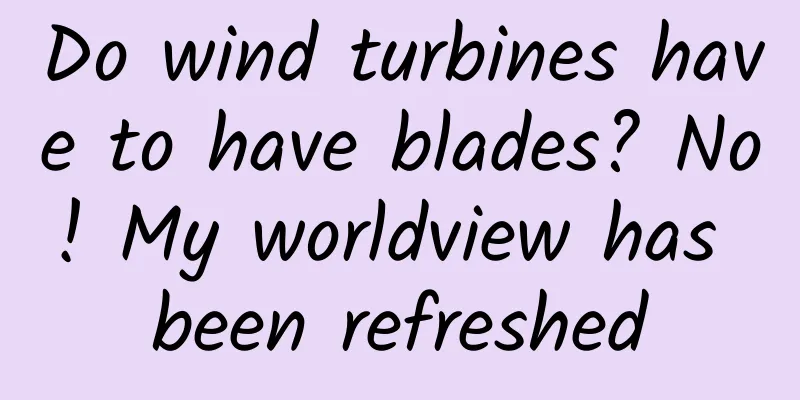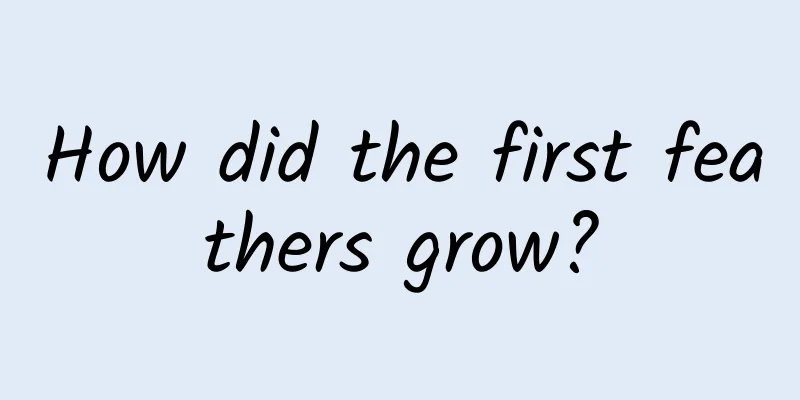Do wind turbines have to have blades? No! My worldview has been refreshed

|
Flapping wing wind turbine | Youtube/ TYER WIND This cute little rabbit can actually generate electricity? That's right! It is continuously generating electricity while flapping its wings in the wind. When you think of “wind turbine,” does a “big white three-bladed windmill” immediately come to your mind? Mainstream three-blade wind turbine | Giphy In addition to this classic shape, real wind turbines also have a variety of magical shapes. Why three blades? As the "ancestor" of wind turbines, windmills have played a huge role in drainage in the Netherlands, making them famous all over the world. The image of the four-bladed Dutch windmill is also deeply rooted in people's hearts. Windmill | Pixabay Multi-blade water-lifting windmills were once popular in the western United States. Multiple blades can make the entire wind wheel produce greater power and provide more sufficient power. Multi-bladed windmill | Pixabay Four-blade or even multi-blade windmills have already taken shape, so why have they become three-blade wind turbines? The number of blades does not directly affect the energy utilization rate . On the contrary, too many blades will interfere with air flow and reduce the utilization rate of wind energy. Wind energy utilization equipment can only capture and utilize 59.3% of the kinetic energy in the wind at most. In this way, a wind turbine can generate the same amount of electricity even if it has only one blade. Single blade wind turbine | Youtube/Audun However, single-blade wind turbines have not become mainstream. A single blade will make the wind rotor extremely unbalanced, seriously threatening the safety of the entire wind turbine. Imagine a large pile of clothes tangled together when being spun dry... The entire washing machine will vibrate violently or even stop working. A washing machine spinning like crazy | Giphy Two symmetrical blades can improve this unbalanced force condition, but it is still not stable enough. Before more ideal load control technology emerges, the application of two-blade wind turbines will still be limited. Schematic diagram of a two-blade wind turbine | Youtube/DOB-Academy studio The three-blade wind turbine solves the problem of balance due to its optimal layout, but its weight has also become one of its pain points. A single wind turbine blade weighs 20 tons, and a wind rotor composed of three blades weighs more than 60 tons, which is really a heavy thing. Once there is a quality problem with the foundation on the ground, the entire unit may overturn and collapse. Collapsed wind turbine | Youtube/ DailyTop20s Some manufacturers have broken down wind turbines into smaller pieces, using multiple small blades to create a four-head, twelve-arm wind turbine. In 2016, Vestas, a leading wind power company, installed a wind turbine with four rotors at the Technical University of Denmark. The unit was completely dismantled after running silently for two years. Due to the scarcity of the model, the relevant data is extremely valuable, and the two institutions have almost never disclosed any data to the public. Four-rotor wind turbine | Power-Technology No blades, but electricity The crazy scientist was not willing to accept the mediocre blades, so he proposed a "bladeless" solution. The legendary electrical giant Nikola Tesla once applied for a patent for a bladeless turbine, but due to the lack of suitable manufacturing materials, it eventually came to nothing. Tesla bladeless turbine schematic | Homeconstructor.de Based on this idea, people developed a bladeless wind turbine with a volute shape. The wind drives the internal disc to rotate, driving the generator to generate electricity. However, this "Peppa Pig"-like wind turbine requires strict guarantee of the processing and manufacturing accuracy of each component, and requires that the wind must be aligned with the air inlet. Such harsh conditions restrict its development. Prototype of bladeless wind turbine | endalldisease.com In order to utilize wind from all directions, people have developed a bladeless wind turbine in the shape of an "inverted horn". This wind turbine installed in Hengshui City can capture wind energy in all directions and make full use of breezes. After the airflow enters the interior, the airflow speed is gradually increased along the slowly shrinking pipe along the way, and finally drives the generator located at the narrowest part of the cross section to generate electricity. The blue line indicates low air velocity and the red line indicates high air velocity | Powermag In addition to generating electricity by "tricking" the wind into the body, some companies have gone a step further and returned to the simplest columnar structure, launching the "Ruyi Jingu Bang" - the bladeless vortex oscillator (Vortex Bladeless). Vortexbladeless It uses the "Karman vortex street" phenomenon: when air flows through, it generates "vortices" that induce reciprocating vibrations in the columns. Simply put, when the columns shake, electricity is generated. However, the efficiency of this model is extremely limited, and long-term vibration will aggravate the wear of the material . It is not yet commercially applicable. Principle of bladeless vortex vibrator | Vortexbladeless Another bladeless wind turbine, the Saphonian bladeless, also uses the vortex shedding effect. Compared with the Golden Hoop wind turbine, the Saphonian has a movable disc and a tail rudder (a vertical trapezoidal plate) installed on the top. "Safnia" | endalldisease.com Vertical axis wind turbines are expected to be in the future In 2016, the wind power bus station near the Icelandic National Music Center was put into operation. The strange-shaped vertical axis wind turbine above the bus shelter provides electricity for lighting and electronic products. This unit can not only adapt to low wind speed environments (2 meters/second), but also work normally in hurricane-level cold winds (over 50 meters/second). vertical axis wind turbine in iceland | Designboom The rotation axis of a vertical axis wind turbine is perpendicular to the airflow direction and is generally perpendicular to the ground plane. Traditional horizontal axis wind turbines need to face the strong wind, while vertical axis wind turbines can accept wind from any direction . The structural bearing capacity of the vertical axis generator is also greatly enhanced, so it can cope with stronger wind levels. These characteristics make the vertical axis generator come alive in the vast ocean. Floating V-shaped vertical axis wind turbine | theguardian.com A new type of wind turbine with a mind-blowing idea "EWICON" designed by Dutch architects is a static net. Multiple horizontal insulating tubes are placed in the rectangular steel frame outer net. Nozzles are densely arranged on each insulating tube. Electrodes generate charged water mist. The wind blows the water mist to form electric current, thereby generating electricity. "Avicon" wind turbine | WonderfulEngineering In the movie "Big Hero 6", there are many motorboat generators floating in the sky to provide power for the city. In fact, this technology has been realized in real life. The average wind speed at high altitude is much higher than that on the ground, and the wind speed fluctuation is more stable. Many companies have set their sights on high-altitude wind power with huge potential value and manufactured commercial "motorboat generators". Aerial wind turbine in "Big Hero 6" | Screenshot Real-life high-altitude generators | everythinginflatables In order to make the overall structure lighter, the "kite wind turbine" came into being. High Altitude Kite Wind Turbine | Hazebird Although these "brain-opening" wind turbines seem beautiful, how to transmit electricity efficiently and stably is still a big problem, hindering their larger-scale application. Today, mature three-blade wind turbine technology has been put into use on a large scale, but scientists are still exploring new generators. The strange appearance is just a surface phenomenon, and approaching the limit of wind energy utilization is the eternal goal of wind energy research. The ultimate pursuit under these artistic appearances is exactly where the romance of scientists lies. References [1]Wobbling in the wind: a bladeless a... - Information Center - Research & Innovation - European Commission (europa.eu) [2] VortexBladeless official website. https://vortexbladeless.com/ [3]No blades! A pole-shaped wind turbine, Vortex Bladeless, generates power by shaking. https://www.bridgestone.com/ [4]Invelox wind turbine, does it work? - betterworldsolutions.eu [5]Alphabet winds down energy kite division - The Verge [6]Watson, S., Moro, A., Reis, V., Baniotopoulos, C., Barth, S., Bartoli, G., ... & Croce, A. (2019). Future emerging technologies in the wind power sector: A European perspective. Renewable and sustainable energy reviews, 113, 109270. [7] Hengshui INVELOX wind turbine construction started in Jingxian Guangchuan http://jingxian.hebei.com.cn/system/2016/07/18/011052501.shtml Planning and production Source: Guokr (ID: Guokr42) Author: Cheng Mingchen Editor: He Tong Proofread by Xu Lai and Lin Lin The cover image and the images in this article are from the copyright library Reprinting may lead to copyright disputes |
<<: Why is it said that “when a whale dies, all things come to life” is the gentleness from the sea?
Recommend
Give you a complete set of community operation solutions
The value of WeChat groups, QQ groups, and Zhangh...
He sleeps and I'm crazy! Why don't people who snore wake themselves up? It turns out it's all related to "them"...
This article was reviewed by Tao Ning, PhD, Assoc...
Whenever I talk to others about my work, I always say “a glimpse of the leopard through the tube can reveal a part of it” (Part 1)
Produced by: Science Popularization China Author:...
"Rod" for smart devices and shout innovative sound "Rod" speaker experience
The increasing popularity of smart products has p...
How far is it from actual combat to use unmanned equipment to improve logistical material support?
There is no doubt that the status and role of unm...
The underlying logic of Qianchuan’s algorithm
This article will talk about how to launch a new ...
How to make users willing to pay? Xunlei's 7 effective strategies to convince 5 million people to pay
There are two things about the Internet that I fi...
It's outrageous to be cut by tulips
What is more likely to be disillusioned than Deng...
How much does it cost to invest in tattoo and embroidery mini programs in Changchun?
How much does it cost to recruit investors for th...
Technology News丨my country's first photovoltaic energy storage demonstration experimental platform is put into operation
【Today’s cover】 On November 19, a partial lunar e...
Science in this week's hot topics: Playing with your phone for 8 minutes before bed can make you excited for more than an hour
2022, Week 9, Issue 7, Total Issue 23 I wanted to...
How to play with free channels - bringing in 300,000 users in three months
When a new APP product enters the market, how to ...
The most powerful method to obtain seed users for App promotion!
No matter how cool the concept of a product is or...
Is it expensive to customize black blessings and black blessing videos for 80?
As Valentine's Day on August 25 approaches, m...
Mou Cong Bodybuilding Elite Training Camp Lecture Video
Introduction to Mou Cong Bodybuilding Elite Train...









